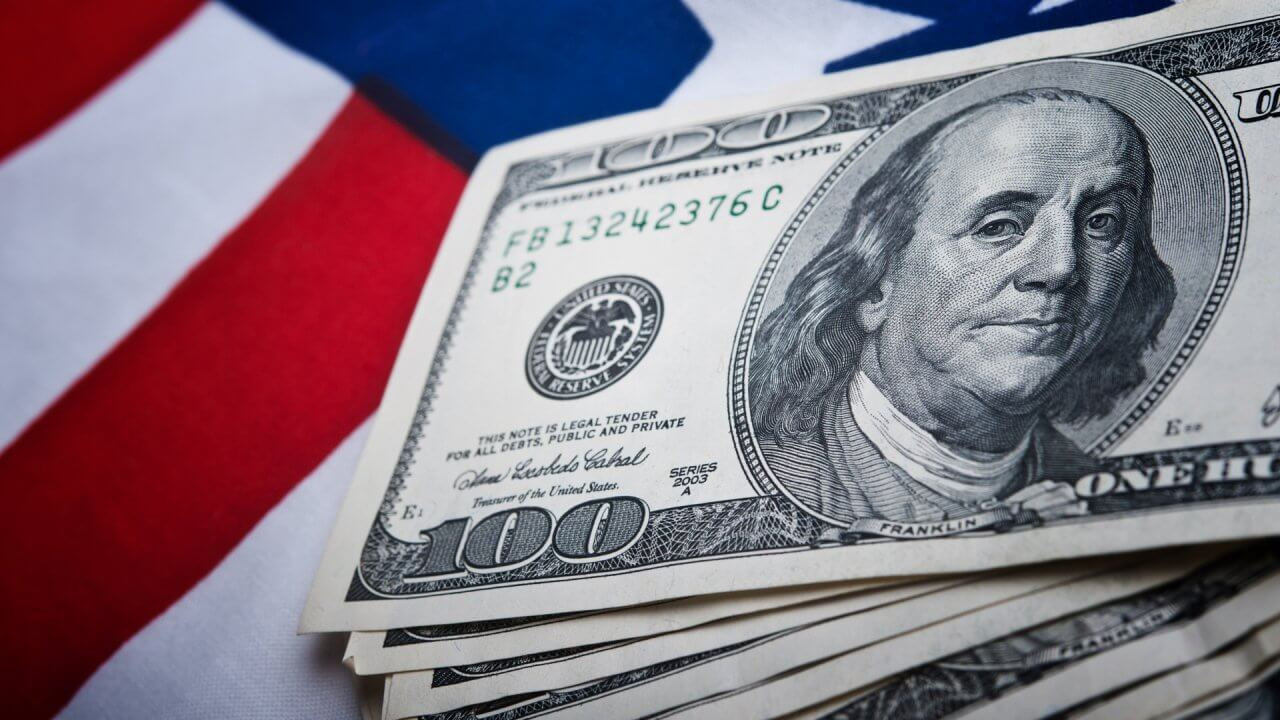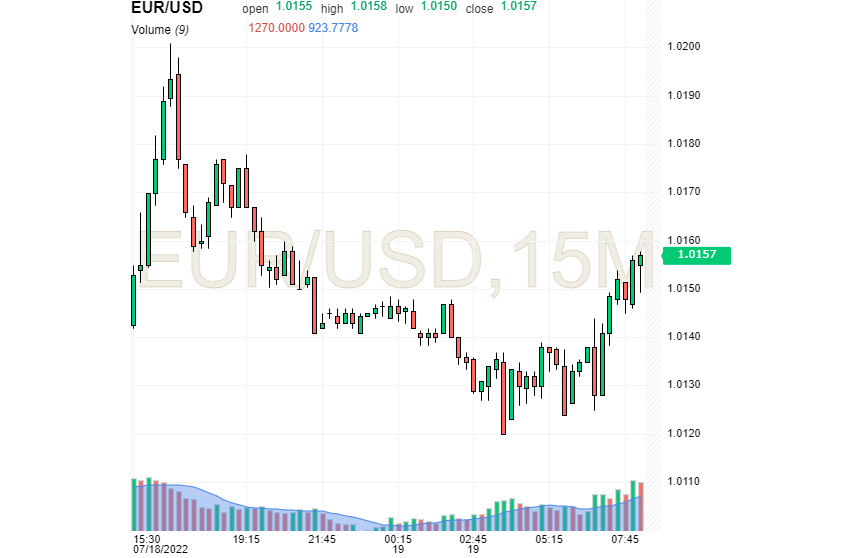
There is little that can hinder the steady growth of the dollar, experts are certain. Short-term price drawdowns do not spoil the overall picture, which provides for a further rise in the USD. At the moment, the dollar is experiencing a slight decline, slightly losing to the euro in the financial ring.
On Tuesday, July 19, the greenback was near the weekly low reached against other world currencies. The reason is the markets' uncertainty about the increase in the Federal Reserve's key rate by 100 bps, which was expected this month. Earlier, traders on futures contracts tied to the Fed's short-term federal funds rate expected it to rise by this amount. However, now market players have changed their minds, leaning towards a rate hike of 0.75 percentage points.
Representatives of Wall Street and managers of large funds expect that the Fed will do everything possible to slow down the growth of consumer prices in the United States. Among the measures that can curb galloping inflation, experts call an increase in rates by 0.75%. Analysts and market participants are concerned about the widening gap between rates in the US and Europe. This situation is favorable for the US currency, but poses a threat to the European one. At the same time, the number of investors seeking to invest in USD exceeds that among supporters of the euro.
However, a strong dollar is a double-edged sword, experts warn. A strong greenback stimulates consumer demand within the country, but negatively affects the income of multinational companies. Management of Microsoft Corp. downgraded its earnings outlook, noting that the greenback's strengthening had cut its earnings by $300 million in the first three months of 2022. At the same time, the strengthening of the USD hit hard on dollar-denominated commodities (such as oil), hindering the economic growth of developing countries.
This week, investors are focused on reports on the profits of leading corporations such as Goldman Sachs Group Inc., Tesla Inc. and Alcoa Corp., as well as the European Central Bank meeting. Market participants are trying to predict the euro's direction and expect the ECB to raise rates for the first time since 2011. Recall that the ECB continues its soft monetary policy, lagging behind the Fed and other countries that are rapidly tightening credit conditions. This measure is necessary to curb rising inflation, experts emphasize.
The euro, which is considered the most weighted currency in the USD index, plunged by 0.08%, reaching 1.0135. However, at the end of Monday, July 18, it grew by 0.6%, bypassing the greenback. On the morning of Tuesday, July 19, the EUR/USD pair was cruising near 1.0157, demonstrating the single currency's confident rise.

Many hedge funds are betting against the euro in the medium and long-term planning horizons. Recall that over the past year, the euro has fallen by 15% against the dollar. The reasons for this collapse are the Russian-Ukrainian conflict, as well as the energy and inflation problems associated with it. The cherry on the cake was the gas crisis, provoked by uncertainty about further supplies of natural gas to Europe from Russia.
The increase in economic tensions and the problems associated with further supplies of natural gas to the EU are pushing the ECB to take decisive action, that is, to raise the rate. It should be noted that the increase in price pressure has caused damage to households and companies in the eurozone. To this are added concerns about a full-scale shutdown of Russian gas supplies after the completion of maintenance of the pipeline.
Against this background, it is difficult for the euro to maintain balance. According to analysts at Commonwealth Bank of Australia, the balance of risks is now shifted towards the weakening of the euro. "At the same time, a path for growth is open for the greenback, since it remains a safe haven asset," the bank emphasizes.
According to a study conducted by MLIV, at the moment it is difficult for the ECB to fight to restore confidence in the financial markets and solve the issues of raising the rate. The threat of recession hangs over the European economy, which "intensifies the epic fall of the euro to incredible levels." At the same time, the ECB is limited in its monetary policy by a significant risk of provoking a recession and a debt crisis. The latter is likely in the face of the huge indebtedness of the southern EU countries. In such a situation, the central bank will limit itself to the expected increase in the rate by 0.25%, experts believe.
A decrease in risk appetite added fuel to the fire of the eurozone monetary policy, which led to a fall in European stocks and the single currency. According to analysts, the volatility of the global stock market will be high by the end of this year. Against this background, the fall of the euro will continue, experts are certain. Now the euro has recovered a bit, but this is a short-term victory. Currency strategists Nomura Holdings Inc., UBS Group AG and BCA Research Inc. claim that by winter the euro will fall to 90 cents. In the EUR/USD pair, in the long term, the more likely scenario is a decline in the euro, rather than its recovery.
 English
English 
 Русский
Русский Bahasa Indonesia
Bahasa Indonesia Bahasa Malay
Bahasa Malay ไทย
ไทย Español
Español Deutsch
Deutsch Български
Български Français
Français Tiếng Việt
Tiếng Việt 中文
中文 বাংলা
বাংলা हिन्दी
हिन्दी Čeština
Čeština Українська
Українська Română
Română

